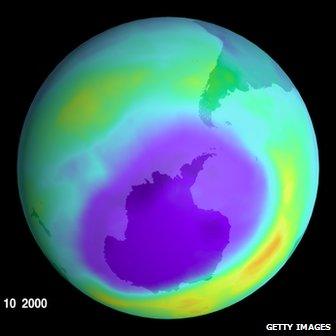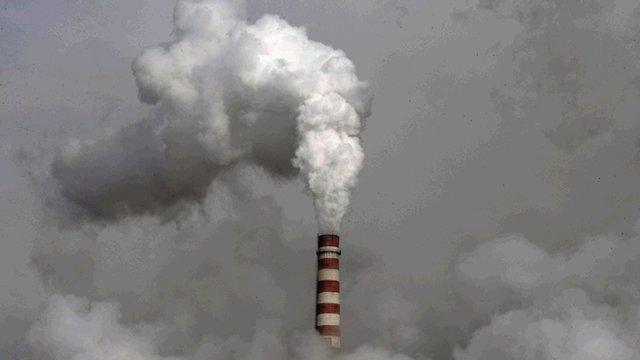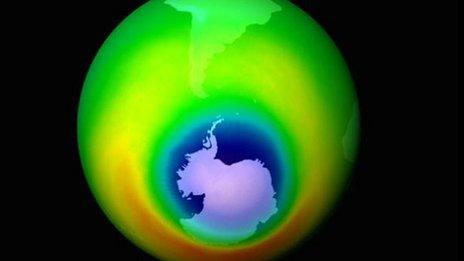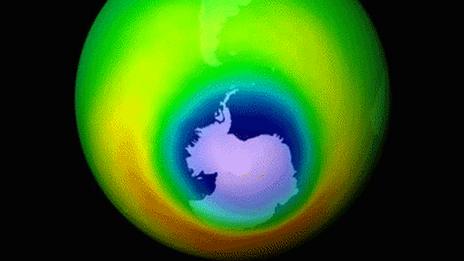Is the US-China deal on curbing HFCs good for the climate?
- Published

In India and China demand for air conditioning is growing rapidly posing problems for the climate
There has been a long-running global boom, external in sales of air conditioning and refrigeration equipment especially in countries with warmer climates like India.
It is a reflection of growing economic clout, especially in many developing nations, where sales are surging by 20% every year.
But this massive increase in the chill factor does have significant implications for the planet's predicted temperature increases.
The gases in the devices that are responsible for cooling millions of homes and offices can wreak warming havoc in the atmosphere.
Chilling effect
Hydroflurocarbons, external (HFCs) were initially developed to help cure the hole in the Ozone layer, external by replacing other gases that were causing the problem.
But the new chemicals have an unwanted side effect: they are powerful greenhouse gases, some have thousands of times more warming potential than carbon dioxide.
Greenpeace estimate, external that the amount of HFC in a typical domestic fridge is the carbon equivalent of driving a medium sized car from London to Moscow. While they only account for 2% of all greenhouse gases at present, HFCs are set to grow rapidly making up 20% by 2050.
However, China and the US have now agreed, external to phase out the production and consumption of these gases, in a deal described as a "political breakthrough".
The US estimates the plan could see the equivalent of 90 billion tonnes of CO2 removed from the atmosphere - around two years' worth of global greenhouse gas emissions.
Some say that it could, by itself, curb global temperatures by 0.5 degrees Celsius. No small achievement.

The hole in the Ozone layer was estimated by Nasa in 2000 to cover almost 30m sq km
While there has been a general welcome for the move, there are also concerns about the motivations behind it and worries that it may not be the climate boon that many believe it to be.
The timing is interesting. The US and other countries first proposed that these gases be restricted in 2009. At that point the idea was opposed by China, India and Brazil.
The Chinese at the time were benefitting financially from perverse climate rules, external that heavily rewarded the production and destruction of some refrigerant gases. Last year the EU finally pulled the plug, external on this scheme, so doing a deal with the US to curb HFCs will not be as expensive as it once might have been.
For the US there are also strong commercial imperatives at play. HFCs, originally developed in America are now being manufactured much more cheaply in Asia. But if these gases are replaced by new ones, called HFOs, external, the knowledge and expertise to develop and sell these products lies within the US.
And will the new deal actually benefit the climate? Many commentators are concerned that the US China deal will be under the auspices of the ozone protection treaty, the Montreal Protocol, external, and not the UN body tasked with developing a global climate agreement, the UNFCCC.
Neither the US nor China are keen on the type of all powerful global deal that many smaller nations are proposing. The US knows that ratifying an international climate plan would be hugely problematic. The Chinese are nervous that it could derail their economic growth.
So while the HFC deal is something that both nations can accommodate, it is does not bring a global agreement to limit carbon emissions any closer.
Follow Matt on Twitter, external.
- Published10 June 2013

- Published21 November 2011

- Published13 May 2013
